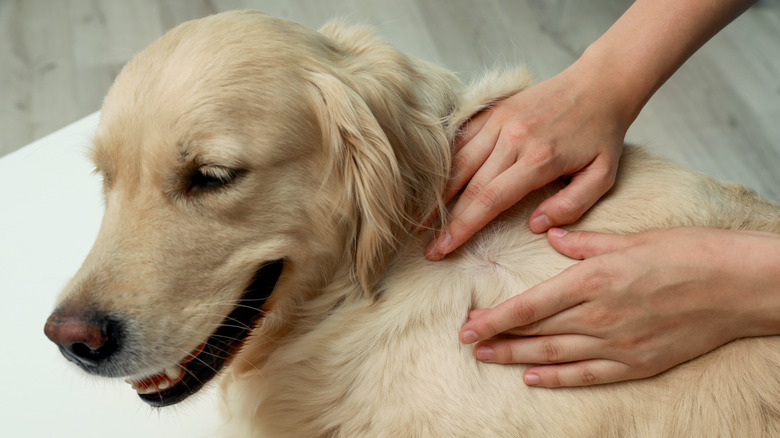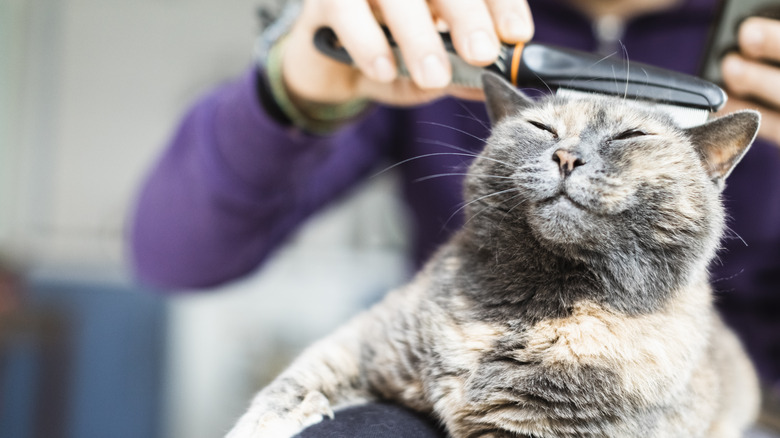What Is Flea Dirt And What Can You Do About It?
We may receive a commission on purchases made from links.
Have you ever grabbed a flea off of your pet with your fingers only to discover it was a tiny, black, lifeless particle? While black debris in a cat or dog's fur may be nothing more than the remnants of a day outside, it could also be what's referred to as "flea dirt." It sounds unpleasant, but this "dirt" is actually the feces of fleas.
How can you determine the difference between flea dirt and regular dirt? There's one easy test to tell. After pulling a speck or two from your pet's fur, place the debris on a white paper towel and wet it with a few drops of water. If the speck turns red or reddish-brown, chances are high that it's flea dirt. Flea feces consists of the dead skin and pre-digested blood of the host animal, hence the color.
Although flea dirt is not necessarily painful or harmful to pets, the presence of it is never a good thing. Flea dirt accumulates only after a flea has had enough time to feed on an animal and excrete waste on its fur. This waste could be a sign of an infestation, so it's important to get your pet started on a flea medication or flea collar as soon as possible. You should also thoroughly clean your home to remove any fleas or residue that might be lurking.
How to remove and prevent flea dirt
Per PetMD, the quickest and most effective methods for removing flea dirt from your pet are a fine-toothed flea comb and a bath. Take the comb and gently pass it through your pet's fur in the same direction that the hair grows. This will remove dirt, as well as live fleas and their eggs. Bathing your companion with a pet-friendly shampoo will also help. However, to increase the chances of exterminating the blood suckers and their eggs during bath time, buy a flea shampoo. You can also make your own flea and tick shampoo.
Removing the flea dirt is one thing, but it's only half of the solution. After combing and bathing your pet, establishing a flea prevention plan and thoroughly cleaning your home are key to prevent fleas and flea dirt from reoccurring. Effective flea preventatives include topical and oral medications, as well as flea collars like Hartz UltraGuard Flea & Tick Collar for Cats and ProElobara Flea & Tick Collar for Dogs. Consult with your veterinarian to discuss the best options for your companion.
Another way to counter the return of flea dirt is to treat your home for fleas and their eggs. This can be done by thoroughly vacuuming carpets, sofas, and curtains and machine-washing all bed sheets – especially pet bedding – in hot water. Finally, use a pet-friendly product like Vet's Best Flea and Home Tick Spray on your floor, drapes, carpet, and pet's bedding to deter future infestations.

